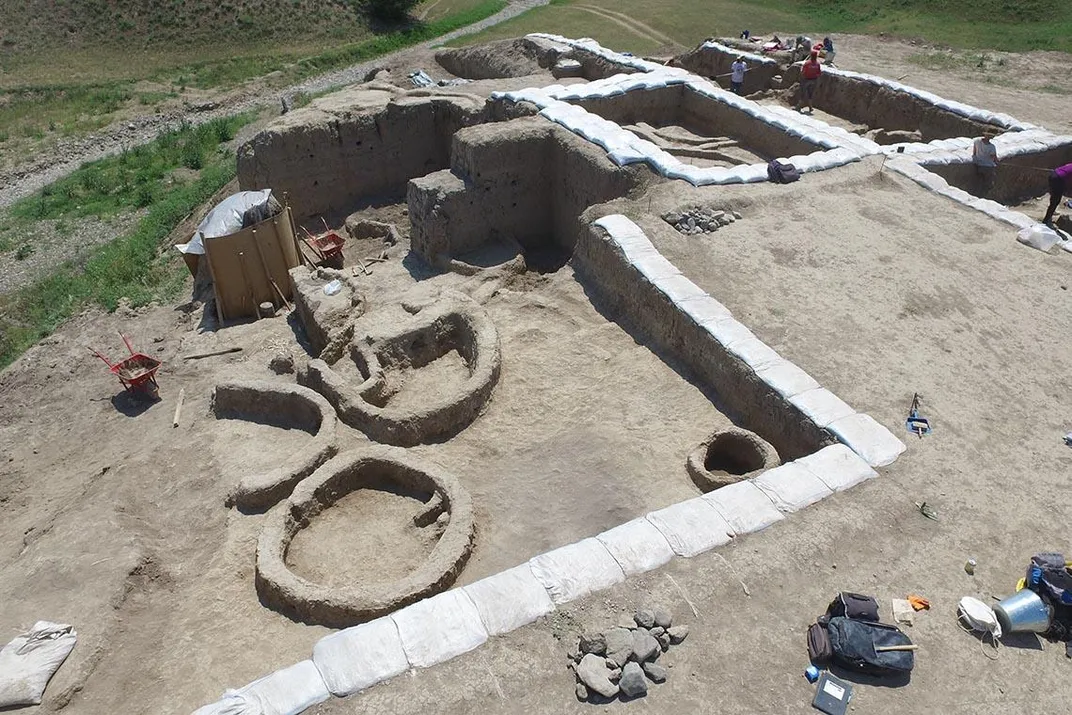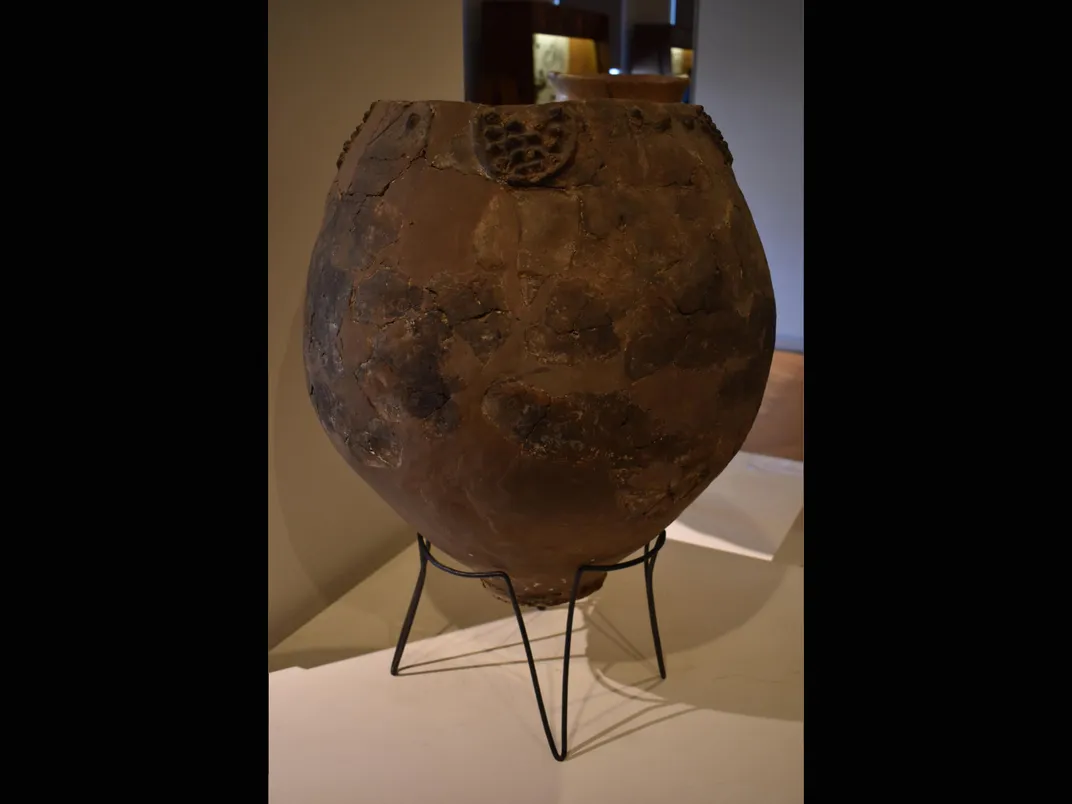Oldest Evidence of Wine Making Found in Georgia
The discovery of grape residues on pottery suggest Neolithic people had a taste for wine 8,000 years ago
/https://tf-cmsv2-smithsonianmag-media.s3.amazonaws.com/filer/a5/b2/a5b28276-6076-490b-82fa-2a69c1f7ab55/155586_web.jpg)
While excavating two Stone Age villages in Georgia, researchers discovered 8,000-year old jars containing what they believe are traces of grape wine. It is the oldest evidence of wine production yet discovered, report Ashifa Kassam and Nicola Davis at The Guardian.
The discovery, detailed in a new study published in the Proceedings of the National Academy of Sciences, was made as part of an international collaboration of archaeologists and botanists who were studying the neolithic villages Gadachrili Gora and Shulaveris Gora. Positioned roughly 20 miles south of the city of Tbilisi, these sites host circular mud-brick homes and a smattering of the stone and bone tools commonly used by people of that age. The region is also home to what are likely among the first clay-fired pots found in the Near East.
The latest find came from large clay jars that were stuck in the floor of the circular dwellings, Andrew Curry at National Geographic reports. One jar found was three feet tall and decorated with what researchers suspected might represent clusters of grapes.
To investigate the purpose of the container, the team sent 30 pottery fragments and 26 soil samples of the surrounding region to be analyzed for evidence of wine-making. The result of this analysis revealed traces of tartaric acid, a compound found in high concentrations in grapes, stuck to the insides of the pots. The soil collected near the pottery had much lower levels of the compound, which suggests that it wasn't naturally occurring, report Kassam and Davis.
Three other grape-related compounds, malic, succinic and citric acid, were also found on the pottery. Other evidence discovered at the site includes grape pollen found in the soil, the remains of a fruit fly, grape starch and cells that may be from a grape vine, according to the Guardian.
“We believe this is the oldest example of the domestication of a wild-growing Eurasian grapevine solely for the production of wine,” co-author Stephen Batiuk of the University of Toronto says in a press release.

As Nicholas St. Fleur at The New York Times reports, prior to this find, the oldest known evidence for grape wine came from the Zagros Mountains of Iran. The Georgian wine, however, pushes back the history of wine 600 to 1,000 years.
This latest analysis did not show the presence of pine resin, which later wine makers used to preserve the beverage, Patrick McGovern, lead author of the study and researcher at the University of Pennsylvania, tells Curry. Because of that, McGovern says it was likely that wine was a seasonal beverage for the people of these villages, and needed to be produced and consumed relatively quickly before it turned to vinegar. The lack of seeds or stems at the site leads McGovern to think the Stone Age people in this region produced wine offsite in cooler areas then brought it to the villages in jugs.
While modern people often look at life in the Neolithic as a somewhat brutal, constant struggle to survive. This latest discovery along with other recent finds suggest that early human communities had the resources to focus not only on survival, but things like culture, spirituality, booze and more.
“Wine fermentation isn’t a survival necessity. It shows that human beings back then were about more than utilitarian activity,” Stanford archaeologist Patrick Hunt, who was not involved in the study, tells Curry. “There’s far greater sophistication even in the transitional Neolithic than we had any clue about.”

While this is the earliest evidence of alcohol made from grapes, it’s far from the earliest evidence of alcohol consumption by humans. Evidence suggests that people in China were making a fermented-honey, rice and hawthorn concoctions 9,000 years ago. But McGovern thinks humans may have been imbibing much, much longer than that—an idea he explores in a book released over the summer entitled Ancient Brews.
Humans have enzymes in their mouth and digestive system that specialize in breaking down alcohol, suggesting that our early ancestors were consuming fermented fruit, he told Lorraine Boissoneault at Smithsonian.com earlier this year. This means it’s possible humans were brewing up their own alcohol long before the Stone Age, though little evidence of this has yet been discovered.
For Georgia, the discovery did not come as a surprise. “Georgia had always suspected it had a Neolithic wine, there were several claims,” David Lordkipanidze, the general director of the Georgian National Museum and co- author of the paper tells St. Fleur. “But now there is real evidence.” Today, the wine culture has blossomed with some 500 varieties of wine grapes and unique wine-producing traditions.
As Curry reports, McGovern and his team hope to see if they can find an existing grape variety that is closely related to the Neolithic variety so they can plant a vineyard to learn more about how the villagers produced their wine. There is still more excavation to be done at the sites, too, which could push the story of wine back even further.